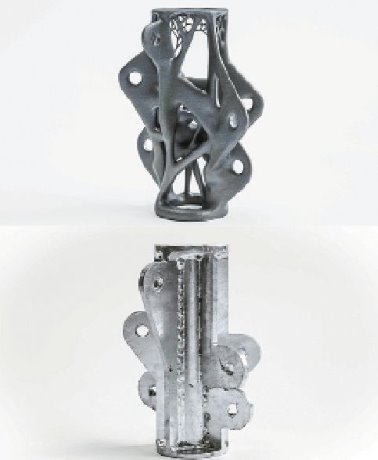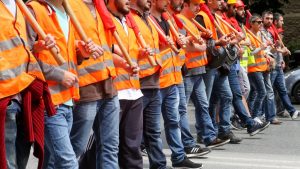The idea of 3D printing has been floating around the periphery of the construction industry for several years now, ever since people began to realize that it could be much more than just an expensive toy for gadget-happy people.
But it wasn’t long before people were looking for ways to use the technique in construction. Now, Arup, the British-based multinational design firm, has led a team that has developed a 3D printing technique for structural steel elements.
The company calls it "a whole new direction for the use of additive manufacturing" which "takes 3D printing firmly into the realm of real-world, hard-hat construction."
Additive manufacturing got its nickname because it can be likened to the widely used inkjet printer. Those machines have a print head loaded with cartridges containing coloured inks. The print-head travels back and forth across the paper as it is slowly fed through the machine. With each pass forms letters by laying down a fine spray of ink.
3D printers use a variety of materials instead of ink, though. The print-head is mounted on a gantry, and its movement is guided by a digital blueprint until the component is created. The "ink" can be plastic thread, or powdered titanium, concrete, or now, in Arup’s case, steel.
A news release from the company says it redesigned and then "printed" a steel node for a lightweight structure such as the Kurilpa Bridge, in Brisbane, Australia. The nodes make use of "tensegrity," a structural principle based on the use of isolated components in compression inside a net of continuous tension. The compressed members — usually bars or struts — don’t touch one another. Cables or tendons connect the ends of the struts and form the edges of the node.
Such elements have been used in a number of buildings worldwide and the Kurilpa Bridge is the world’s largest tensegrity structure.
The Arup team says their research also shows that additive manufacturing has the potential to reduce costs, cut waste and slash the carbon footprint of the construction sector. It also makes it possible to design far more elegant elements where nicer-look elements are important.
They say that the complex geometry of the nodes make them an ideal showcase for the possibilities of the new technique. Although it’s still cheaper to make a traditional steel node, 3D printing becomes more cost-effective as the node design becomes more complex.
Salomé Galjaard, the team leader said that the process means many complex individually designed pieces, can be created far more efficiently.
"This has tremendous implications for reducing costs and cutting waste. But most importantly, this approach potentially enables a very sophisticated design, without the need to simplify the design at a later stage to lower costs."
Arup funded the development work, and collaborated with a number of partners, including WithinLab (engineering design software) and CRDM/3D (printing).
Many researchers are working on applications for 3D printing, sometimes combining it with robotics.
In Spain, for example, researchers at the Institute for Advanced Architecture of Catalonia, have created a set of small robots they’ve nicknamed Minibuilders.
The Minibuilders work as a team. The Foundation Robot lays down the concrete base of a structure, while the Grip Robot sits at the top of the foundation and runs around it, laying down a bead of concrete, instantly curing it so that it can maintain its upward motion. A Vacuum Robot climbs to the side of the object being printed and lays down perpendicular swatches of concrete.
Working together, they can build complex objects that would usually require moulds or other cumbersome equipment.
And some researchers at Imperial College London, in England, inspired by a tiny bird called a swiftlet, have equipped a quadcopter—a drone with four rotors—that can "print" its own "nest" out of foam. It is, they believe, the first flying 3D printer.
The swiftlet is native to southeast Asia. Most species build more-or-less conventional nests, but one makes its nest entirely of sticky threads of its own saliva, which harden when exposed to air. People collect the nests, wash them and sell them to restaurants for making birds-nest soup.
But researchers aren’t interested in soup. Instead, they have equipped their quadcopter with containers of two chemicals which create polyurethane foam when mixed. They also mounted a printing module on the quadcopter to extrude the foam.
In a recent demonstration, a box was set in a large room and its co-ordinates programmed into a GPS unit. The quadcopter then took off and found the target. Once there, it sprayed foam over the box, then flew away. Next up was a hexacopter (six rotors), which landed on the foam, waited for a minute while the foam hardened, then took off again, carrying the box with it.
The idea is that if the box contained, say, radioactive waste, the copters would provide a safe way to remove it.
The team has even developed versions of the quadcopter that carry cameras and software to survey the environment, and work out the best path to its landing point.
The hexacopter can carry just 2.5 kilograms, but Mirko Kovac, one of the researchers, said scaled-up versions could carry as much as 40 kg.
Other possible uses include patching damaged roofs, and some of the tasks involved in building bridges.











Recent Comments
comments for this post are closed